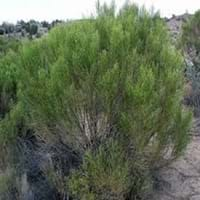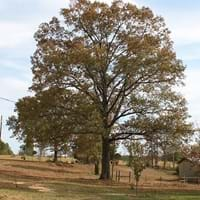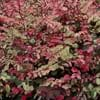Life Span
Perennial
Perennial
Origin
Hybrid origin, Southwestern United States
United States, Mid-Atlantic United States, Southeastern United States, Central United States, South-Central United States
Types
Not Available
Not Available
Habitat
riparian zones, Semi desert, Upland
Sandhills
USDA Hardiness Zone
8-10
6-9
Sunset Zone
7, 8, 9, 10, 11, 12, 13, 14
Not Available
Habit
Spreading
Oval or Rounded
Flower Color
White
Red, Light Green
Flower Color Modifier
Not Available
Bicolor
Fruit Color
creamy white
Brown, Black
Leaf Color in Spring
Green
Green, Gray Green
Leaf Color in Summer
Green
Gray Green, Dark Green
Leaf Color in Fall
Green
Gray Green, Dark Green, Tan, Dark Red
Leaf Color in Winter
Green
Not Available
Leaf Shape
Oblanceolate , Ovate
Lobed
Plant Season
Spring, Summer, Fall, Winter
Spring, Summer, Fall
Sunlight
Full Sun
Full Sun
Type of Soil
Clay, Loam, Sand
Clay, Loam, Sand
The pH of Soil
Acidic, Neutral, Alkaline
Acidic, Neutral
Soil Drainage
Well drained
Well drained
Tolerances
Drought, Dry soil, Heat Tolerance
Pollution
Where to Plant?
Ground, Pot
Ground
How to Plant?
Seedlings
Seedlings, Stem Planting, Transplanting
Plant Maintenance
Medium
Medium
Watering Requirements
Needs very little water
Average Water Needs, Do Not over Water, Keep ground moist, Never Over-water, Requires watering in the growing season, Water less during winter
In Summer
Lots of watering
Lots of watering
In Spring
Moderate
Moderate
In Winter
Average Water
Average Water
Soil pH
Acidic, Neutral, Alkaline
Acidic, Neutral
Soil Type
Clay, Loam, Sand
Clay, Loam, Sand
Soil Drainage Capacity
Well drained
Well drained
Sun Exposure
Full Sun
Full Sun
Pruning
Cut back old stems to the ground, Remove damaged leaves, Remove dead branches, Remove dead leaves
A hard prune may be necessary if the plant becomes woody, Remove damaged leaves, Remove dead branches, Remove dead leaves
Fertilizers
can go long without fertilizers
fertilize in growing season
Pests and Diseases
Pests and diseases free
Leaf Blister, Spider mites
Plant Tolerance
Dry Conditions, Dry soil, Heat And Humidity
Drought, Salt
Flowers
Showy
Insignificant
Flower Petal Number
Single
Not Available
Foliage Texture
Fine
Coarse
Foliage Sheen
Glossy
Glossy
Attracts
Butterflies
Birds
Allergy
Unknown
no allergic reactions
Aesthetic Uses
along a porch, deck or patio, Beautification, Ground Cover, Showy Purposes, Wild gardens
Landscape Designing
Beauty Benefits
Not Available
Not Available
Edible Uses
Sometimes
Yes
Environmental Uses
Air purification
Air purification
Medicinal Uses
anti-inflammatory, Anti-oxidant, cholesterol-lowering
Nutrients
Part of Plant Used
Twigs
Bark, Seeds, Stem, Tree trunks
Other Uses
Can be made into a herbal tea
Economic Purpose, Used in construction
Used As Indoor Plant
No
No
Used As Outdoor Plant
Yes
Yes
Garden Design
Groundcover
Feature Plant, Shade Trees
Botanical Name
BACCHARIS 'Centennial'
QUERCUS falcata
Common Name
desert broom , broom baccharis , greasewood
Southern Red Oak
In Hindi
desert broom
दक्षिणी लाल ओक
In German
Wüste Besen
Südliche Red Oak
In French
desert broom
Chêne rouge du Sud
In Spanish
escoba del desierto
Roble Rojo meridional
In Greek
desert broom
Νότια Red Oak
In Portuguese
vassoura do deserto
Southern Red Oak
In Polish
desert broom
Southern Red Oak
In Latin
desert broom
Quercus falcata
Phylum
Magnoliophyta
Magnoliophyta
Class
Magnoliopsida
Magnoliopsida
Family
Asteraceae
Fagaceae
Clade
Angiosperms, Asterids, Eudicots
Angiosperms, Eudicots, Rosids
Tribe
Astereae
Not Available
Subfamily
Not Available
Not Available
Number of Species
Not Available
Not Available
Importance of Desert Broom and Southern Red Oak
Want to have the most appropriate plant for your garden? You might want to know the importance of Desert Broom and Southern Red Oak. Basically, these two plants vary in many aspects. Compare Desert Broom and Southern Red Oak as they differ in many characteristics such as their life, care, benefits, facts, etc. Every gardener must at least have the slightest clue about the plants he wants to plant in his garden. Compare their benefits, which differ in many ways like facts and uses. The medicinal use of Desert Broom is anti-inflammatory, Anti-oxidant and cholesterol-lowering whereas of Southern Red Oak is Nutrients. Desert Broom has beauty benefits as follows: Not Available while Southern Red Oak has beauty benefits as follows: Not Available.
Compare Facts of Desert Broom vs Southern Red Oak
How to choose the best garden plant for your garden depending upon its facts? Here garden plant comparison will help you to solve this query. Compare the facts of Desert Broom vs Southern Red Oak and know which one to choose. As garden plants have benefits and other uses, allergy is also a major drawback of plants for some people. Allergic reactions of Desert Broom are Unknown whereas of Southern Red Oak have no allergic reactions respectively. Having a fruit bearing plant in your garden can be a plus point of your garden. Desert Broom has no showy fruits and Southern Red Oak has showy fruits. Also Desert Broom is not flowering and Southern Red Oak is not flowering . You can compare Desert Broom and Southern Red Oak facts and facts of other plants too.





